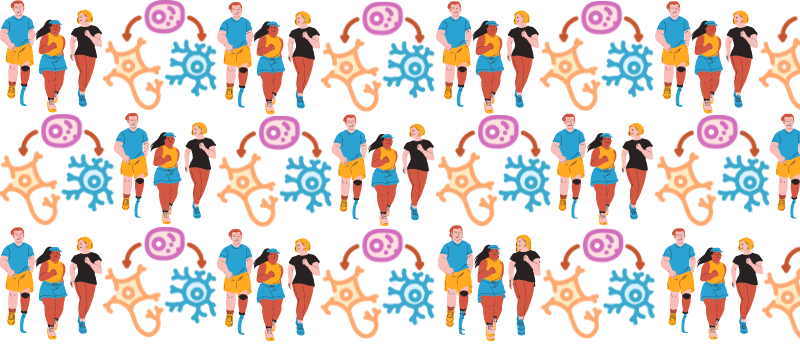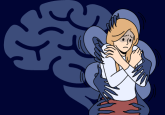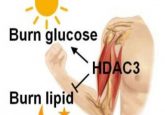Exercise, neurogenesis and PTSD: identifying the key to novel treatments

Researchers have demonstrated the positive impact of exercise in the treatment of mice with PTSD-like symptoms, investigating the underlying biology of the association.
Recent research led by Paul Frankland (University of Toronto, Canada) and Risako Fujikawa (Kyushu University, Japan) has utilized a combination of behavioral and genetic experiments in mouse models to highlight processes that could prove essential to treating post-traumatic stress disorder (PTSD). The study identified that increasing neuron formation, particularly through exercise, had beneficial effects for mouse models of the disease.
PTSD arises in some individuals after they have experienced or witnessed a severely traumatic event, increasing anxiety, avoidance behaviors and social isolation. While almost 4% of the global population live with this condition, treatments remain ineffective for many, and new approaches are desired by clinicians.
Many studies have examined the role of reconciliation and extinction, the gradual diminishing of a conditioned response over time, in treating PTSD. However, the act of forgetting is also seen as an important process in potential treatment paradigms. Neurogenesis plays a key part in forgetting or reducing the vividness of memories, likely due to the loss or disruption of older neural connections to make way for new ones.
The hippocampus has been well characterized as a key component in the formation of memories tied to specific locations and environments and is known to continually produce new neurons in a subsection of the hippocampus called the dentate gyrus. Exercise is known to increase neurogenesis and is often touted as having a positive impact on conditions associated with mental wellbeing. With this in mind, Fujikawa, Frankland and colleagues set out to investigate the effects of exercise on the dentate gyrus and its impacts on PTSD behaviors.
To do this, the team first established mouse models with PTSD-like symptoms and then separated them into two cohorts: one with access to a running wheel and one without. After 4 weeks, the cohort with the running wheel displayed an increase in newly formed neurons in the dentate gyrus and a decrease in the severity of their PTSD-like symptoms.
 Recording the brain in vivo: emerging technologies for the exploration of mental health conditions
Recording the brain in vivo: emerging technologies for the exploration of mental health conditions
Mounting interest in mental health conditions over the last two decades has been coupled with the increasing sophistication of techniques to study the brain in vivo.
To further investigate the role of neurogenesis, the team established two genetic techniques to increase neurogenesis in the PTSD mouse models. The first involved the introduction of proteins into the neurons of the dentate gyrus that, upon illumination, led to the rapid maturation of new neurons. This dramatically increased the length, branching and integration of novel neurons into neural circuits 14 days post illumination. The second approach knocked out a protein responsible for slowing neural growth, which also accelerated neurogenesis and integration.
Both of these approaches were shown to decrease PTSD-like symptoms in the mouse model, although not as powerfully as the initial cohort of mice that were able to exercise; neither genetic approach addressed the anxiety of the mice. Commenting on the finding, Fujikawa remarked, “it could be that the neurogenesis and the re-modeling of the hippocampus circuits disrupt fear memory but have less effect on mood or emotions. Exercise also has broader physiological effects, which may contribute to the stronger outcomes seen.”
The team further validated their findings by testing if neurogenesis and exercise improved the process of forgetting in another context: addiction. Mice were put in a cage with two rooms, in which they received either a saline solution or cocaine. When later granted access to either room, the mice spent more time in the room where they were administered cocaine.
When the mice were administered exercise or were treated with the same genetic methods described earlier to increase neurogenesis in the dentate gyrus, the preference for the room was lost, indicating that the associative link between the room and cocaine had been forgotten.
Next, the team want to investigate the pharmacological possibility of accelerating neurogenesis to help treat PTSD. Critically though, the team does not want to gloss over the findings related to exercise, which Risako explained “had the most powerful impact on reducing symptoms of PTSD and drug dependence in mice, and clinical studies in humans also show it is effective.”
Though human brains are significantly more complex than mice, and the additional contributing factors to the benefit of exercise in this study need to be elucidated, this study may one day prove to be foundational to the creation of exercise regimens that could be prescribed as adjunct treatments alongside behavioral and cognitive therapies to treat PTSD.





